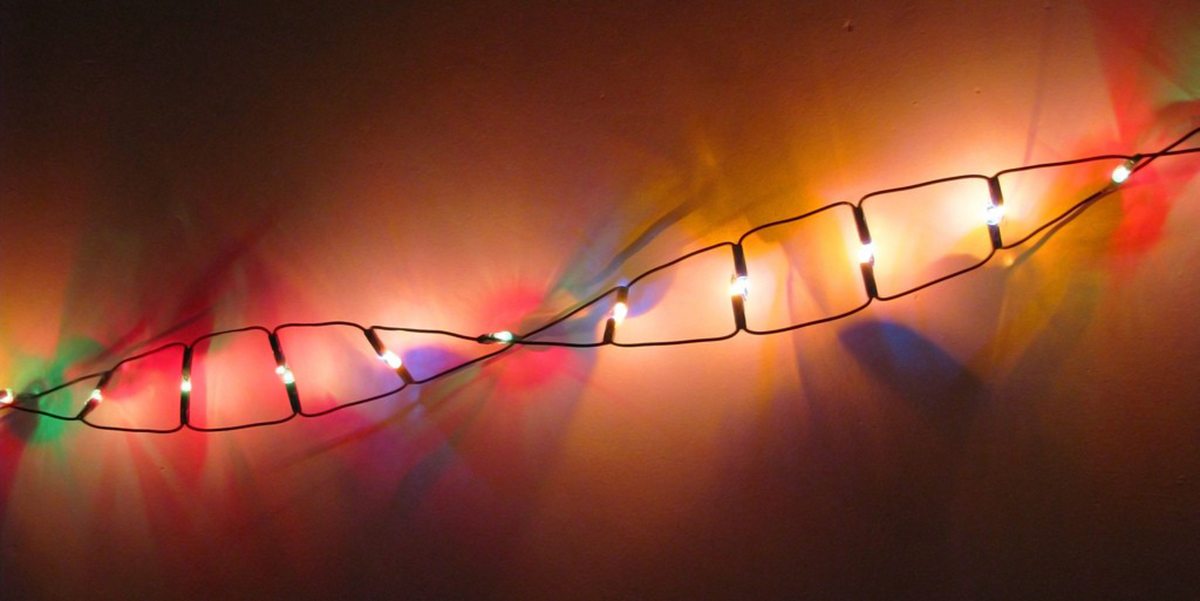How diet influences gene expression
The genetic information contains the complex code that controls the development of a living being. This code is contained in a structure known as DNA and is read in the form of genes. The human genome contains 20,000 to 25,000 genes that code for proteins that participate in a wide variety of cellular functions. In order to keep the genomic information intact, there are several mechanisms that are in charge of checking for errors that could potentially cause a mistaken genetic sequence, ending up in a not very nice outcome.

However, there are several factors that naturally cause changes, or mutations, in the genetic code. These factors can either act directly on to the DNA chain, such as errors that occur while the DNA is being copied when cells replicate, and environmental factors like UV rays or some toxic chemicals.
Epigenetic changes: What are they exactly?
There are other ways to alter the expression of a gene, which do not involve mutations, but subtle changes to the mechanisms that guard the DNA.
Researchers have focused in several mechanisms that can promote epigenetic changes, but one of the most studied is the effect of our diet in the induction of such modifications. Yes, just as you read: What you eat can affect the expression of one or several genes. It is hard to believe right? Because genes are supposed to be well kept in the nucleus of each cell. How would a burger or a broccoli floret could reach such a well-guarded site in your cells?
Food switches genes on and off
In general, all the food we ingest is modified in the gastrointestinal tract in order for it to be absorbed by the cells of the small intestine, transported through the blood stream and metabolized by the cells.
Certain food components, when metabolized, produce a specific chemical group known as methyl group.
Once DNA methylation, as this process is called, happens, it stays throughout the life of the individual.
Where can we find methyl groups?
Certain foods are better as methyl group donors than others. Vitamins and minerals, such as vitamin B12 and B6, and methionine and folic acid, are important in the chemical synthesis of methyl groups.
See Also: 9 Of The Easiest Diet Tips Ever
Other substances like betaine, present in wheat, spinach and beets, resveratrol, present in red wine, and genistein, an antioxidant present in soy, also participate in the production of methyl groups.
Other Epigenetic Changes Affected By Diet
DNA methylation is not the only epigenetic mechanism that is affected by diet. Histone modification is a different way of inducing changes in the expression of our genes.

Histone modification: loosed genes, tighten genes
Histones are like the reels onto which DNA is rolled and packed. In order for a gene to express, DNA has to be unrolled in a specific region in order to be exposed to the machinery that activates gene expression. When the expression of a gene needs to be switched off, this same region rolls back again and hides the gene, so that it is not expressed.
Histone acetylation specifically might be related to inflammation. Resveratrol, an antioxidant substance that is present in the skin of red grapes, is a great source of acetyl groups.
This is important because chronic inflammation is a major mechanism of cellular damage and has been related to the development of neurodegenerative diseases, such as Alzheimer’s and Parkinson’s disease.
Epigenetic changes and disease
Cancer and inflammation are only a few medical conditions that are related to epigenetic changes, because diet influences gene expression since we are in the womb.
Mom’s diet also alters the expression of the baby’s genes and can cause the development of certain illnesses at the time the baby is born, or later in life.
For example, some studies in rats have found that a maternal diet high in fats can increase the amount of fat tissue in the baby and cause alterations in the metabolism of glucose, increasing the risk of the baby to suffer from obesity. A maternal diet low in protein, on the other hand, can affect the baby’s growth and can increase the risk of hypertension.
Dad’s diet can also affect the baby’s development, although mechanisms are different to those seen regarding the mom’s diet, and are not that well understood.
What should we eat, then?
It is important to note that genetic differences among us can also affect the way we respond to what we eat.
So, even when it has been shown that certain food components can affect specific genes, this might not be true or might be different from person to person, depending on their genetic background.
See Also: Genetics Is Not the Only Secret of Skinny People
Currently, a lot of research is being done in the interaction of food components and our genes, but this is not an easy task to do. The ultimate goal of scientists is to be able to unveil these interactions, so that they have the tools to design personalized diets that contain the exact nutritional compounds necessary to help you and me to improve our health, delay the aging process and prevent the development of chronic diseases, such as diabetes, neurodegenerative disorders, cardiovascular diseases and cancer.
Until this happens, at least we know that we certainly are what we eat. We have to make sure that we are getting all the nutrients we need to live a long and healthy life.
- CHOI, S. W. & FRISO, S. 2010. Epigenetics: A New Bridge between Nutrition and Health. Adv Nutr, 1, 8-16
- JANG, H. & SERRA, C. 2014. Nutrition, epigenetics, and diseases. Clin Nutr Res, 3, 1-8
- VICKERS, M. H. 2014. Early life nutrition, epigenetics and programming of later life disease. Nutrients, 6, 2165-78.
- Photo courtesy of MarLeah Cole by Flickr : www.flickr.com/photos/marleahjoy/13708009325
- Photo courtesy of Stuart Caie by Flickr : www.flickr.com/photos/kyz/3340435836


Your thoughts on this